This trail is approximately 2 miles of easy walking, and takes about ¾ of an hour.
It is suitable for wheel chairs.
Begin at the public car park at the town end of Newton Road - now the Lidl Car Park - and restricted stay currently 90 minutes. [2019]
|
|
Walk up Newton Road, passing the former Fire Station on your left, until arriving at Newton Road Infant and Junior Schools. In his autobiography "The Vanished Years", H.E. describes how, when he was four years old, his step-grandmother seized him by the ear, lugged him away and deposited him unceremoniously on the steps of the Council infant school. There is a plaque commemorating H.E. in the Junior School which he attended from 1.5.1913 to 3.8.1916.
Note: Picture c1910
|
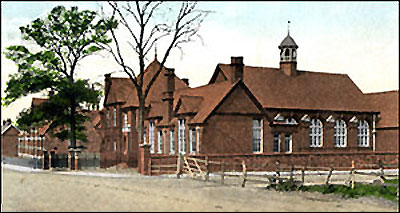 |
Cross the road and walk down Newton Road. Take the first turning on your left into Grove Road.
No. 51 Grove Road is the birthplace of H.E.
Note: See the blue plaque on the house
|
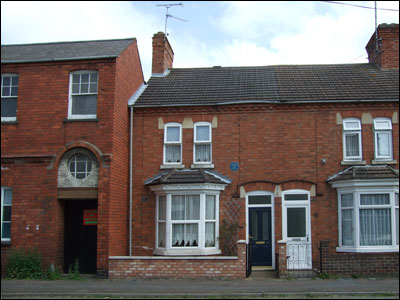 |
No. 48 Grove Road was formerly a pork butcher's shop, and is mentioned in "The Vanished World", as is
No. 50 Grove Road formerly Brittain's bakehouse.
No. 52 Grove Road was formerly the bakery of Mr W Saint.
Mr Bert Harris was known as "the midnight Baker" because he was often still delivering his bread in the evening.
In the same book H.E. describes the street games that he and his friends played.
|
 |
|
Continue along Essex Road and turn right into Park Road.
No. 15 Essex Road was the home of H.E. from 1914 to 1922. It was built by his grandfather in 1900. H.E.'s mother lived here until the 1980's.
Continue along Grove Road and turn right into Essex Road.
Note: See the blue plaque on the house
|
 |
Turn left down Albion Place. Notice Rock Cottage on your right. Continue along the alley, passing the former Green's shoe factory on the right. Take a moment to notice the plaques on the front. Turn right.
Go down the steps on the left.
Opposite is the old South End school building (1870-1972).Cross the A6 road, and walk up Wymington Road.
On the left was Rushden Hospital (demolished 2014) formerly the Sanatorium mentioned in H.E.'s novel and television serial "Love for Lydia".
|
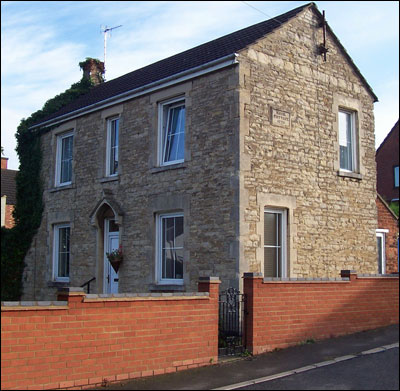 |
Enter the park gates further up on the right and follow the tarmac path. The ridge and furrow near the children's playground is a reminder of Rushden's medieval fields.
[the children's playground has now moved to behind the walled garden - it used to be on the left as you enter the park from Wymington Road - 2010]
Ahead is Rushden Hall, the setting for "Love for Lydia" and now used partly as Council Offices and partly for exhibitions, meetings and private functions. It contains interesting panelling and fireplaces.
|
 |
Follow the path past the front of Rushden Hall and go down the slope to the gate on the A6. Note the house opposite, formerly part of Smith's farm.
The house on the right of the park gate is the only surviving thatched cottage in Rushden.
[carefully cross the road and look back across and left to see this cottage]
|
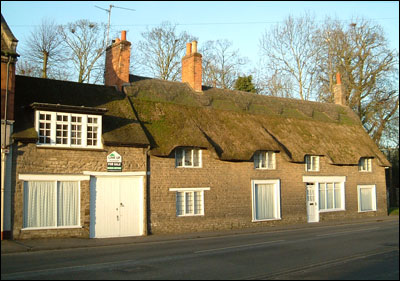 |
Cross to Griffith Street opposite and walk up. Windleberry Lodge on the right was also part of Smith's farm. There is an excellent view of St. Mary's Church through a gap in the houses on the left.
At the top of Griffith Street is the Methodist Church where H.E. and his family worshipped.
|
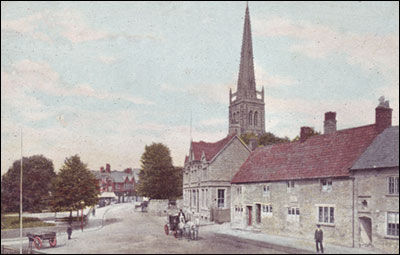 |
Turn left and, at the traffic lights, turn right. The car showroom on the corner was formerly the British Women's Temperance Hall. [now a car parts retailer - 2010]
Cross the road to the Newton Road car park.
Note: BWT Hall centre, recycling centre left - car park behind this building
|
 |